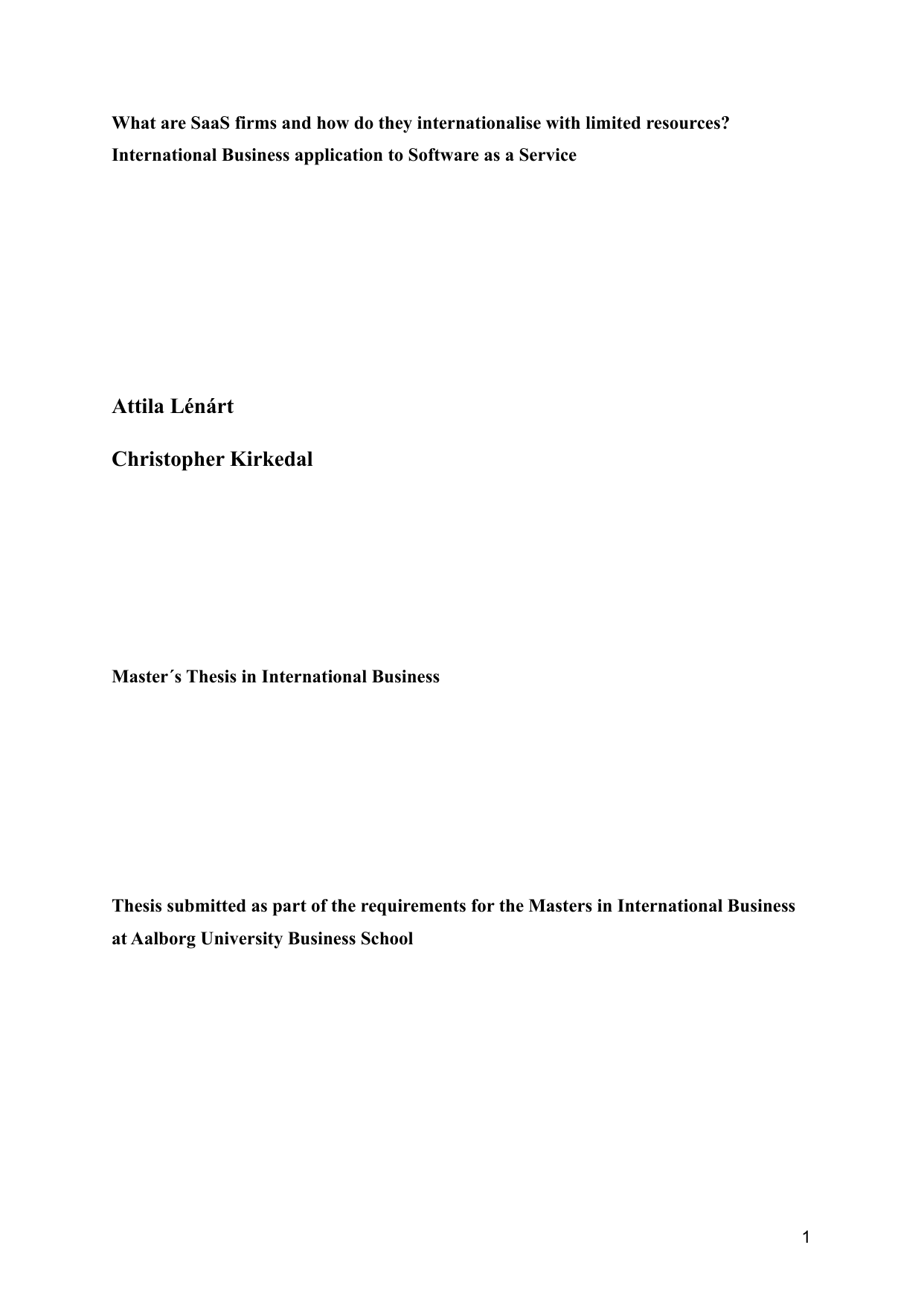
What are SaaS firms and how do they internationalise with limited resources? International Business application to Software as a Service: Applying the International Business perspective, what is the business model of the SaaS Born Global firm? And How does the business model enable SaaS firms to rapidly expand to multiple markets seemingly overnight?
Term
4. Semester
Publication year
2022
Submitted on
2022-06-01
Pages
72
Abstract
Software as a Service has become popular in the business world. Born Globals have been introduced in International Business, and Born Globals include SaaS companies. What is exemplary about Born Globals is that they operate and internationalise under asset parsimony. Extant academic literature is still unclear on the internationalisation factors of Born Globals, as perspectives are still being investigated. This paper aims to introduce SaaS companies within the context of internationalisation by analysing the business model and the internationalisation behaviour of said firms. The paper includes a criticism of extant core theories, and further provides a perspective that could help in understanding the firm in context. The research paper builds on findings of other authors who have been investigating this phenomenon. Through interviewing five case companies at various stages of their business maturity stage, the research questions aim to complement existing research to provide further perspectives in the field.
Software as a Service has become popular in the business world. Born Globals have been introduced in International Business, and Born Globals include SaaS companies. What is exemplary about Born Globals is that they operate and internationalise under asset parsimony. Extant academic literature is still unclear on the internationalisation factors of Born Globals, as perspectives are still being investigated. This paper aims to introduce SaaS companies within the context of internationalisation by analysing the business model and the internationalisation behaviour of said firms. The paper includes a criticism of extant core theories, and further provides a perspective that could help in understanding the firm in context. The research paper builds on findings of other authors who have been investigating this phenomenon. Through interviewing five case companies at various stages of their business maturity stage, the research questions aim to complement existing research to provide further perspectives in the field.
Keywords
Documents
